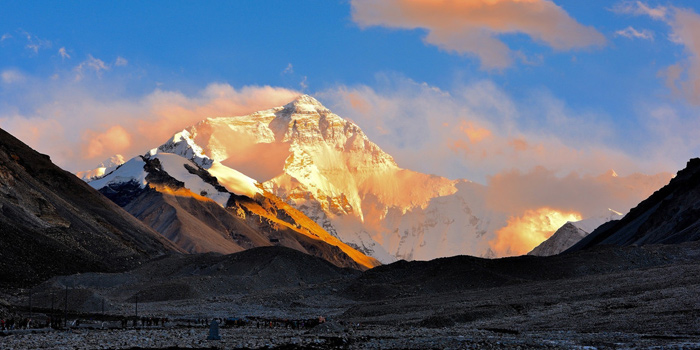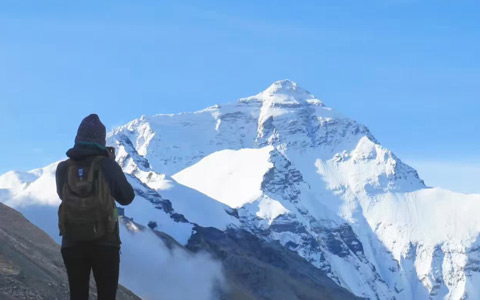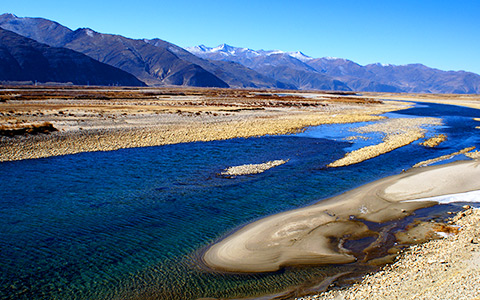All Facts about the Himalayas: In-depth Exploration of Himalayan Facts
As a marvelous gift from nature, the Himalayas and its surrounding regions attract countless tourists. While conquering the world's highest peak may be an impossible mission for most travelers, exploring the forests, villages, and mountains of the Himalayas promises an unforgettable journey.
Get to know some fascinating facts about the Himalayas before you take the lifetime adventure to this awe-inspiring mountain range.
 1. The Word Himalaya Means "Abode of Snow"
1. The Word Himalaya Means "Abode of Snow"
 2. The Himalayas have 10 Peaks exceeding 8000 Meters
2. The Himalayas have 10 Peaks exceeding 8000 Meters
 3. The Himalayas are 2500-kilometer Long from West to East
3. The Himalayas are 2500-kilometer Long from West to East
 4. The Himalayas Region Used to Be an Ancient Ocean
4. The Himalayas Region Used to Be an Ancient Ocean
 5. The Himalayas Shape the Climate of the Indian Plain and Tibetan Plateau
5. The Himalayas Shape the Climate of the Indian Plain and Tibetan Plateau
 6. The Himalayas are the Source of 19 Rivers in Asia
6. The Himalayas are the Source of 19 Rivers in Asia
 7. The Himalayas Experience Varied Weather from Lush Summers to Snowy Winters
7. The Himalayas Experience Varied Weather from Lush Summers to Snowy Winters
 8. The Himalayas are Home to Over 50 Million People
8. The Himalayas are Home to Over 50 Million People
 9. The Himalayas Harbor More than 300 Species of Animals
9. The Himalayas Harbor More than 300 Species of Animals
 10. The Himalayas Are Totally Different from Mount Everest
10. The Himalayas Are Totally Different from Mount Everest
 11. The Himalayas Do not Belong to Any Single Country
11. The Himalayas Do not Belong to Any Single Country
 12. The Existence of the Yeti in the Himalayas is still Uncertain
12. The Existence of the Yeti in the Himalayas is still Uncertain
1. The Word Himalaya Means "Abode of Snow"
The name of the mountain range, Himalaya, originally came from the world Himā-laya, which means ‘Abode of Snow’ in Sanskrit. In Tibetan, the Himalaya means the Land of Snow. And in Chinese, it is called Ximalaya.
2. The Himalayas have 10 Peaks exceeding 8000 Meters
There are ten peaks exceeding 8000 meters in elevation in the Himalaya ranges, namely Mount Everest (8848 meters), Kangchenjunga (8586 meters), Lhotse (8516 meters), Makalu (8485 meters), Cho Oyu (8281 meters), Dhaulagiri (8167 meters), Manaslu (8163 meters), Nanga Parbat (8126 meters), Annapurna (8100 meters), Shishapangma (8064 meters).
Moreover, there are 40 mountains over 7000 meters above the sea level. That’s why the Himalayas is the highest mountain range on Earth.
 One can see top peaks of the Himalayas at Gawula Pass in Tibet.
One can see top peaks of the Himalayas at Gawula Pass in Tibet.
3. The Himalayas are 2500-kilometer Long from West to East
Running from west-northwest to east-southeast, the Himalayan range is 2500 kilometers long, with the western anchor in Nanga Parbat and the eastern anchor in Namcha Barwa. The northern Himalaya is bordered by the Karakoram Mountains and the Hindu Kush Mountains.
To the north, it is separated from the Tibetan Plateau by the Indus-Tsangpo Suture, which is a 50 to 60 kilometers wide tectonic valley. To the south, the Himalayas is facing the Indo-Gangetic Plain. The width of the Himalayas is from 200 kilometers to 300 kilometers from north to south.
4. The Himalayas Region Used to Be an Ancient Ocean
As one of the youngest mountain ranges on Earth, the Himalayas were formed by the convergent boundary between the Eurasian Plate and the Indo-Australian Plate. Around 70 million years ago, the Indo-Australian Plate was moving northward and reached the Eurasian Plate about 50 million years ago.
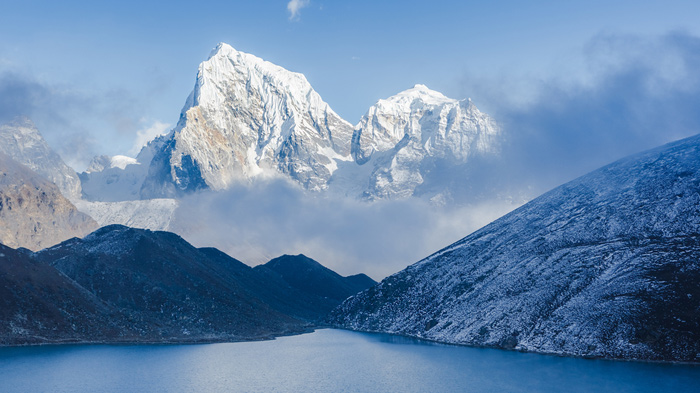 The Himalayas was once an ancient sea.
The Himalayas was once an ancient sea.
Then, these two plates were faulted and folded, creating the mountain ranges we see today. The presence of marine limestone at the summit of Mount Everest, the highest peak of the Himalayas, provides evidence that the mountain range originated from the ancient Tethys Ocean.
5. The Himalayas Shape the Climate of the Indian Plain and Tibetan Plateau
The Himalayas significantly shape the climate of the Indian Plain and Tibetan Plateau. Thanks to the Himalayas ranges, the monsoon rains can be kept on the Indian plain, ensuing fertile lands and diverse ecosystems thrive.
Conversely, the mountains block monsoons from penetrating deep into Tibet, resulting in limited rainfall and an arid climate on the plateau. This stark difference creates a rain shadow effect, with the southern slopes experiencing abundant rainfall, while the northern slopes and Tibetan Plateau remain dry.
6. The Himalayas are the Source of 19 Rivers in Asia
The Himalayas serve as the origin of 19 important rivers in Asia, including the Indus River, the Ganges River and the Yarlung Tsanpo River.
 The Himalayas is the source of the Yarlung Tsanpo River.
The Himalayas is the source of the Yarlung Tsanpo River.
The vast glaciers and snowfields atop these majestic mountains act as the primary source, nourishing these significant waterways and sustaining the livelihoods of millions of people downstream.
As the lifeline of the region, these rivers play a vital role in supporting agriculture, providing water resources, and shaping the cultural and ecological diversity along their courses.
7. The Himalayas Experience Varied Weather from Lush Summers to Snowy Winters
The Himalayas have diverse climates, ranging from tropical to alpine, primarily influenced by the Indian monsoon from mid-June to the end of September.
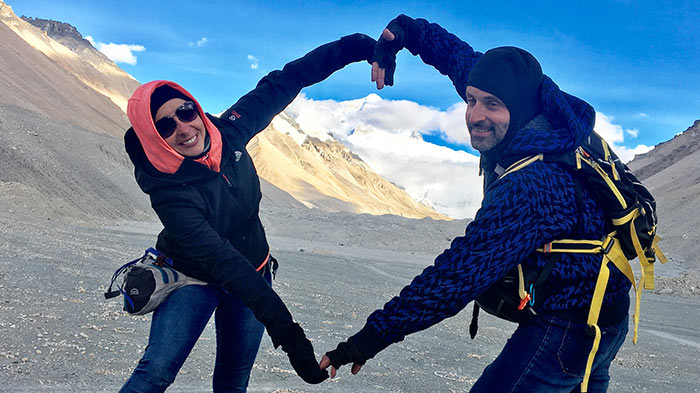 Dressing in warm clothes when visiting Mount Everest on the Tibetan side
Dressing in warm clothes when visiting Mount Everest on the Tibetan side
The eastern to western Himalayas become drier due to reduced monsoonal effects. And the southern side of the mountain has a lush and moist climate while the northern side is warmer and dryer due to the lack of rain.
The climate of the Himalayas can be divided into summer and winter. On the southern side, the average temperature is around 20°C in summer, and 18°C in winter. As altitude increases, temperatures gradually decrease. At mid-range, summer drops to 15°C, and winter stays below freezing. Above 5000 meters, temperatures remain freezing year-round, with constant snow on mountain tops.
For a more comfortable journey to the Himalayan regions, it is advisable to choose the best travel season. The ideal time to visit Tibet is from April to October, while Nepal is best experienced from February to April and October to November. For Bhutan, the best time to visit is from October to December.
8. The Himalayas are Home to Over 50 Million People
There are over 50 million people living in the entire range of the Himalayas. The population of the Himalayas includes Aryans, Mongoloids, and Negroids.
Furthermore, there are about 600 million people living in the basins formed by the rivers rising in the Himalayas, such as the Indus, the Ganges, and the Tsangpo-Brahmaputra.
People living in the different regions of the Himalayas are influenced by various cultures and have their own faith and beliefs. On the north side of Mount Everest, Tibetans believe in Tibetan Buddhism. The culture of the middle Himalayan valleys is similar to that of Afghanis and Iranians. In Nepal, the culture is influenced by both Tibetan and Hindu traditions.
 Tibetan Buddhism is one of the major religions in the Himalayas region.
Tibetan Buddhism is one of the major religions in the Himalayas region.
So it will be a lifetime experience to explore the different cultures that all originated from the great Himalayas when you visit India, Nepal, Bhutan and Tibet.
9. The Himalayas Harbor More than 300 Species of Animals
Though it is an awful living environment for human beings, the Himalayan Mountains is the home to some rare animals, like Snow Leopard, Himalaya Wild Yak, Musk Deer, Himalayan Tahr, and some other endangered species.
In total, there are over 300 mammal species and thousands of birds, fish, reptiles, and amphibians living harmoniously in the Himalayas. Due to the different climates in different regions of the Himalayan Mountains, such as the subtropical and alpine regions, the animals differ.
Tourists may have a chance to see the yaks and Himalayan Marmots in the lower areas of Mount Everest. The Himalayan Tahrs prefer to live on the mountain slopes and wooded hills at 3000-4000 meters above sea level on the southern side of Mount Everest, while the Himalayan blue sheep reside in the rocky hills at 4000 to 6000 meters.
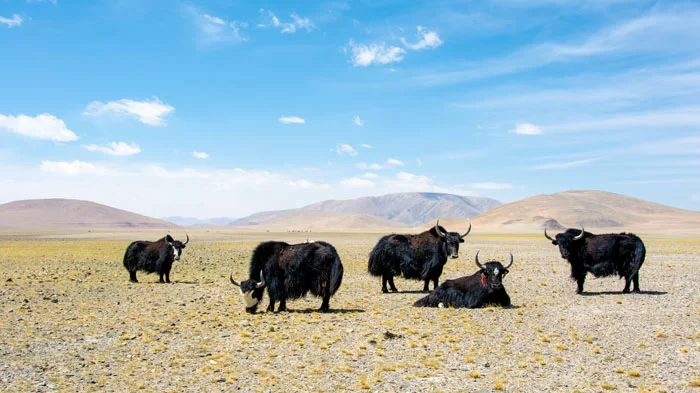 Tourists may have a chance to see the yaks in the lower areas of Mount Everest.
Tourists may have a chance to see the yaks in the lower areas of Mount Everest.
There are also two kinds of bears living in the Himalayas, namely the Himalayan brown bear and the Himalayan black bear. One of the rarest species in the Himalaya Mountains is the Snow Leopard. Recently, there are just 3,920 and 6,390 wild snow leopards that have been found.
In order to keep away from the extremely cold atmosphere in the third pole on Earth, the animals living in the Himalayas mostly have thick skin and heavy bodies. Despite their bulky appearance, these animals in the Himalayas are very alert.
10. The Himalayas Are Totally Different from Mount Everest
Some people may mistakenly think that the Himalayas are the same as Mount Everest. Well, this is totally wrong. The Himalayas are a mountain range that encompasses many peaks located in the southern end of the Qinghai-Tibetan Plateau.
Mount Everest, on the other hand, is a part of the Himalayan mountain range and is the tallest peak in the world, located on the border of China and Nepal. Tourists can go to visit Mount Everest from either the Tibetan side or the Nepalese side.
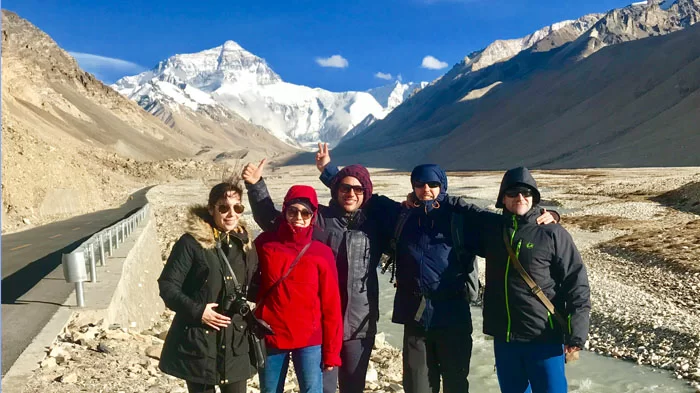 Paying a visit to the Mount Everest from Tibetan side
Paying a visit to the Mount Everest from Tibetan side
11. The Himalayas Do not Belong to Any Single Country
The Himalayas is located along the border of India, Nepal, Pakistan, Bhutan and China in southern Asia. As a part of the frontier, the Himalayas is southwest to China, north to Bhutan, and northeast to India and Nepal.
As a result, the Himalayan mountain ranges do not belong to any single nation. While India, Nepal, and Bhutan claim sovereignty over most of the Himalayas, parts of them are also occupied by Pakistan and China. In fact, the main section of the Himalayas stands at the junction of China and Nepal, encompassing its tallest peak, Mt. Everest.
12. The Existence of the Yeti in the Himalayas is still Uncertain
What makes the Himalayas so attractive? Not only the wonders of Nature, the unique culture, and the mysterious religions but also some interesting folklores, such as the world-famous story of the Yeti.
According to the legend, the Yeti is a huge creature that inhabits the Himalayan regions in Nepal, Bhutan, and Tibet. It is taller than ordinary people and covered with thick hair. The story of the Yeti became known to the Western world in the 19th century, and reports of seeing odd creatures in the Himalayas increased during the 20th century.
In the past, supposed footprints and the scalp of the Yeti were found, but to this day, it remains uncertain whether Yetis truly exist in the Himalayan regions. Nevertheless, the legend of the Yeti continues to captivate people's attention to Everest, making the Himalayas a destination for curious explorers from all over the world.
Conclusion
After discovering these fascinating facts about the Himalayas, do you now have a more vivid image of this magnificent mountain range? I hope this article has inspired you and provided a fresh perspective on the Himalayas.
If the opportunity arises, consider visiting the Himalayas yourself; it's not as challenging as you might think. And if you have any further questions about traveling to the Himalayas, feel free to contact us. We are delighted to offer our professional travel services to assist you.

Kham Sang is responsible and honest with more than six years of guide experience in Tibet.She has strong interpersonal skills and can communicate effectively with tourists.
Related Articles & Posts
Most Popular Tibet Tour Packages
-

Lhasa - Gyantse - Shigatse - Everest Base Camp - Shigatse - Lhasa
USD939
View Details -

Lhasa - Gyantse - Shigatse - E.B.C - Saga - Kailash Trek - Darchen - Lake Manasarovar - Saga - Gyirong - Tingri - Lhasa
USD2059
View Details -

10 Days Lhasa to Everest Base Camp and Namtso Lake Small Group Tour
Lhasa - Gyantse - Shigatse - EBC - Shigatse - Lhasa - Namtso Lake - Damxung - Lhasa
USD1289
View Details -

8 Days Driving Across Himalaya Overland Adventure from Kathmandu to Lhasa
Kathmandu - Gyirong - Everest Base Camp - Tingri - Shigatse - Gyantse - Lhasa
USD1069
View Details -

4 Days Lhasa Impression Small Group Tour: Explore the Heart of Tibet and Mingle with the Locals
Lhasa
USD509
View Details -

Lhasa - Gyantse - Shigatse - Everest Base Camp - Gyirong - Kathmandu
USD979
View Details -

Lhasa - Gyantse - Shigatse- Lhasa
USD799
View Details -

13 Day Lhasa, Mt. Everest, Mt. Kailash, Lake Manasarovar and Kathmandu Adventure Tour
Lhasa - Gyantse - Shigatse - EBC - Saga - Darchen - Kailash Trek - Darchen - Saga - Gyirong - Kathmandu
USD2059
View Details


.jpg)



